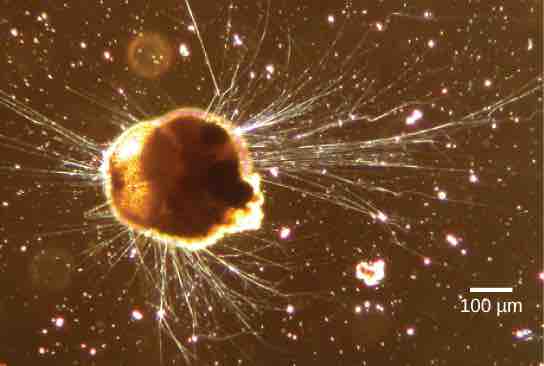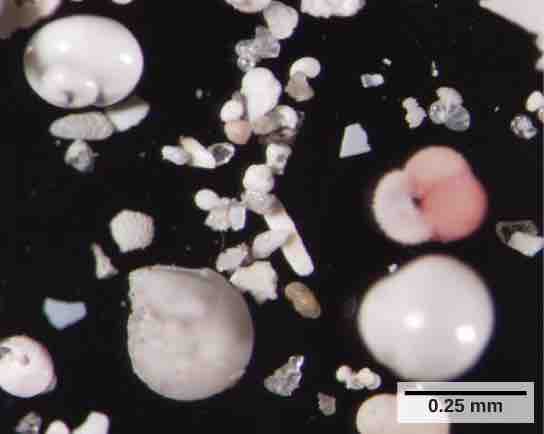Rhizaria
The Rhizaria supergroup includes many of the amoebas, most of which have threadlike or needle-like pseudopodia . Pseudopodia function to trap and engulf food particles and to direct movement in rhizarian protists. These pseudopods project outward from anywhere on the cell surface and can anchor to a substrate. The protist then transports its cytoplasm into the pseudopod, thereby moving the entire cell. This type of motion, called cytoplasmic streaming, is used by several diverse groups of protists as a means of locomotion or as a method to distribute nutrients and oxygen.

Ammonia tepida
Ammonia tepida, a Rhizaria species viewed here using phase contrast light microscopy, exhibits many threadlike pseudopodia.
Forams
Foraminiferans, or forams, are unicellular heterotrophic protists, ranging from approximately 20 micrometers to several centimeters in length; they occasionally resemble tiny snails . As a group, the forams exhibit porous shells, called tests, that are built from various organic materials and typically hardened with calcium carbonate. The tests may house photosynthetic algae, which the forams can harvest for nutrition. Foram pseudopodia extend through the pores and allow the forams to move, feed, and gather additional building materials. Foraminiferans are also useful as indicators of pollution and changes in global weather patterns.
The life-cycle involves an alternation between haploid and diploid phases. The haploid phase initially has a single nucleus, and divides to produce gametes with two flagella. The diploid phase is multinucleate, and after meiosis fragments to produce new organisms. The benthic forms has multiple rounds of asexual reproduction between sexual generations.

Forams
These shells from foraminifera sank to the sea floor.
Radiolarians
A second subtype of Rhizaria, the radiolarians, exhibit intricate exteriors of glassy silica with radial or bilateral symmetry . Radiolarians display needle-like pseudopods that are supported by microtubules which radiate outward from the cell bodies of these protists and function to catch food particles. The shells of dead radiolarians sink to the ocean floor, where they may accumulate in 100 meter-thick depths. Preserved, sedimented radiolarians are very common in the fossil record.

Radiolarian shell
This fossilized radiolarian shell was imaged using a scanning electron microscope.